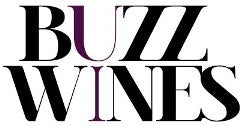'Tasted from bottle, the cork popped and poured, this shows evident reduction on the nose, this feature really dominating the aromatic profile at the moment. I see a suggestion of dark and savoury fruits behind, but it is difficult to get past the reduction right now. Despite this rather reticent character on the nose the palate feels immediately understated and elegant, silky and complete, much more tense and yet harmonious than Les Poyeux in the same vintage, and yet it clearly displays a full and charged energy to it. It finishes long and confident, with lingering grip. An impressive composition, if somewhat hunkered down, with rich grip hiding beneath the sinewy texture. In short, this is superb, even under all that reduction. Give it ten years as a bare minimum. Gosh I wish I had some of this in my own cellar.' 97 points, Chris Kissack, The Wine Doctor, October 2022.
After 14 generations of continuous ownership (from 1664) passed down through successive generations by the one family this small 10 ha estate has changed ownership following the death of one of the two Foucault brothers. Charly Foucault, who was responsible for both the vineyard work and the wine-making, passed away in late December 2015 and following a long and difficult process the domaine is now owned by one of France’s wealthiest families, the Bouygues. The Bouygues family own several food and wine related interests including Château Montrose in St Estephe and Château Tronquoy Lalande in Bordeaux and other wine properties in Burgundy with the acquisition of 51% of the bio-dynamically farmed Henri Rebourseau domaine based in Gevrey Chambertin, not to mention a truffle farm Chinon.
To say that this property has become a cult estate is an understatement with sommeliers and restaurants the world over clambering to buy the wines or visit the estate, an almost impossible task to arrange even for us as the importers. The Foucault family had been quietly producing tiny quantities of wines from the same small plots of vines in Saumur and Saumur Champigny that the family owned and farmed for generations, with the notable exception of the purchase in 1993 of 1 hectare of very old vines in Brézé. Perhaps it was the addition of this tiny plot of ancient vines on the east facing slope of this historically great terroir of Brézé that has bought the worlds attention to this estate, such is the beauty and rarity of this wine.
Farming organically without the use of modern fertilisers and systemic chemicals and replanting with massale selection of vines and giving the wines very long ageing in barrels and then also in bottle before releasing each new vintage ensured that the wines would show their best upon release. Not only was it this ‘slow wine’ method of production that had appeal, but very simply these wines are among the greatest to be found in France. These are wines of rare breed and texture and complexity for the white Brézé (which, with age, is often compared to great white Burgundies) and also for the small 1 ha patch of very old Cabernet Franc vines located in Chacé that makes the iconic ‘Le Bourg’ red. Just 4000 bottles are produced of each of these 2 wines in a good year - and the demand from wine lovers around the world is enormous.


